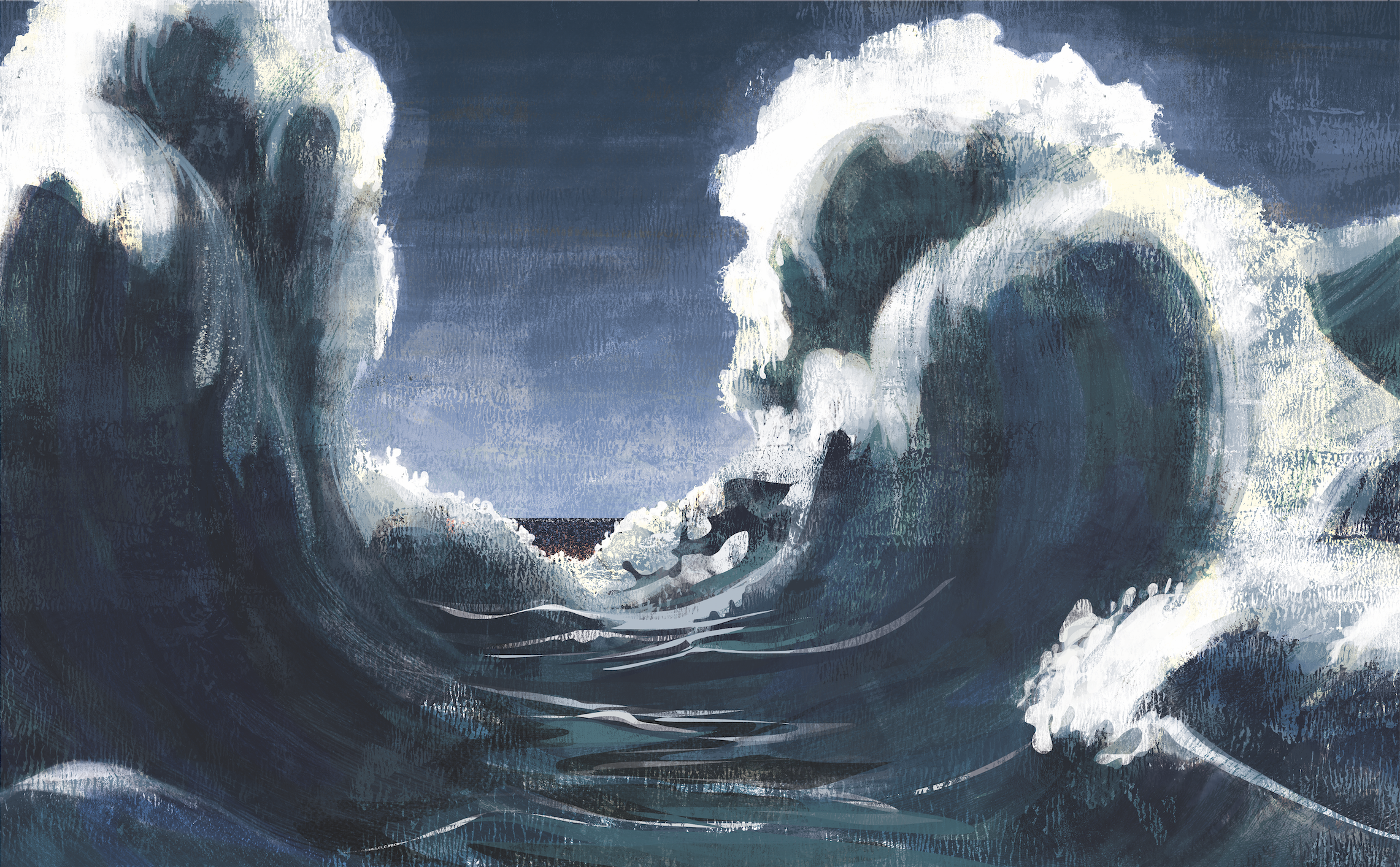
Hope in the midst of pain. We Christians can have a hard time holding the two—hope and pain—together. Our discussions of hope often skip past the reality of pain. And our thoughts about pain are often surprisingly unspecific about the sources of Christian hope. Each author in this section was given a similar assignment: Start with a specific source of pain—
especially one rooted in a communal context that they knew well. Then, think of specific sources of hope that take seriously the reality of that pain.
The gospel is God’s response to the human condition. It is God’s imaginative response to our shared story of longing and loss, and that gospel is what turns our common experience into a shared story of future hope. We in the church tend to think that the human condition is simply about the need for forgiveness—as if being forgiven will remove the longings and losses that make being human so complicated. But even after redemption, we long for the healing of all creation, and we still suffer losses because creation remains (for now) tainted with sin. Those longings and losses permeate our lives. They define us. They are what it means to be human.
That is why Jesus came to live among us—to experience what it meant to be human. He came to literally inhabit our story. The Book of Hebrews describes Jesus as our mediator and high priest who stands between God and humanity. But he is not just a high priest. He is a high priest who knows our weaknesses
(Heb 4). He too lay awake at night, burdened by the longings and the losses of what it means to be human. The Word became flesh and dwelt among us to experience the depth of longing and the agony of loss—to understand people by being a person. Then, he created a way for us to imagine hope in the midst of our pain by dying and rising again.
As you read these articles, perhaps you can experience empathy for those who describe a pain you have never faced. And perhaps you can find hope in the articles that describe a pain you may know all too well. We proclaim the gospel because it allows us to imagine a godly hope in the midst of human pain.

Esperanza en medio del dolor. Los cristianos podemos tener dificultades para mantener a los dos, esperanza y dolor, juntos. Nuestras discusiones sobre la esperanza a menudo pasan por alto la realidad del dolor. Y nuestros pensamientos sobre el dolor a menudo son sorprendentemente inespecíficos en cuanto a las fuentes de la esperanza cristiana. A cada autor en esta sección se le asignó una tarea similar: comenzar con una fuente específica de dolor, especialmente una enraizada en un contexto comunitario que ellos(ellas) conocieran bien. Luego, pensar en fuentes específicas de esperanza que tomen en serio la realidad de ese dolor. El evangelio es la respuesta de Dios a la condición humana. Es la respuesta de Dios a nuestras historias, las cuales comparten anhelo y pérdida, y ese evangelio es lo que convierte nuestra experiencia común en una historia comunitaria de esperanza futura. En la iglesia, tendemos a pensar que la condición humana se trata simplemente de la necesidad del perdón, como si ser perdonado(a) eliminara los anhelos y las pérdidas que hacen que ser humano sea tan complicado.
Pero incluso después de la redención, anhelamos la sanidad de toda la creación y aún sufrimos pérdidas porque la creación permanece (por ahora) contaminada con el pecado. Esos anhelos y pérdidas impregnan nuestras vidas. Ellos nos definen. Son lo que significa ser humano. Es por eso que Jesús vino a vivir entre nosotros, para experimentar lo que significa ser humano. Él vino a habitar literalmente nuestra historia. El libro de Hebreos describe a Jesús como nuestro Mediador y Sumo Sacerdote que se interpone entre Dios y la humanidad. Pero él no es solo un Sumo Sacerdote. Es un Sumo Sacerdote que conoce nuestras debilidades (Heb 4). Él también permaneció despierto por la noche, agobiado por los anhelos y las pérdidas de lo que significa ser humano. La Palabra se hizo carne y habitó entre nosotros para experimentar la profundidad del anhelo y la agonía de la pérdida, para comprender a las personas al ser una persona. Luego, creó una forma de imaginar esperanza en medio de nuestro dolor al morir y resucitar.
Al leer estos artículos, quizás pueda experimentar empatía por aquellos(as) que describen un dolor que usted nunca ha enfrentado. Y tal vez pueda encontrar esperanza en los artículos que describen un dolor que usted conoce muy bien. Proclamamos el evangelio porque nos permite imaginar una esperanza piadosa en medio del dolor humano.

고통 중의 소망. 우리 그리스도인들은 이 두 가지—소망과 고통—을 동시에 가지는 것에 어려움을 느낄 수 있습니다. 소망에 대한 논의에서 우리는 종종 고통스러운 현실을 빼놓곤 합니다. 그리고 우리의 고통에 대한 생각이 놀랍게도 많은 경우에 그리스도인의 소망의 근원에 대하여 구체적이지 않습니다. 이 섹션의 각 저자에게는 비슷한 주제가 주어졌습니다: 특정한 고통의 근원—특히 잘 알고 있는 공동의 맥락에 기반한 것—으로부터 시작할 것, 그 다음 그 고통의 현실을 진지하게 받아들일 수 있는 구체적인 소망의 근원들을 생각해 볼 것 이었습니다.
복음은 인간의 상태에 대한 하나님의 반응입니다. 그것은 우리 모두의 갈망과 상실의 이야기에 대한 하나님의 창의적인 반응이며, 그 복음은 우리의 일상적인 경험을 미래 소망의 공유된 이야기로 바꾸는 것입니다. 교회 안에서의 우리는 인간의 상태가 단순히 용서를 필요로 하는 상태라고 생각하는 경향이 있습니다—마치 용서를 받는 것이 인간됨을 복잡하게 만드는 갈망과 상실을 완전히 없애주는 것처럼 말입니다. 그러나 구속 이후에도 우리는 여전히 모든 피조물의 치유를 갈망하고 있으며, 또한 피조물이 (현재로서는) 죄로 물들어 있는 상태이기 때문에 우리는 여전히 상실로 인해 고통받고 있습니다. 이러한 갈망과 상실은 우리 삶에 스며들어 있습니다. 그것들이 우리를 정의하며, 우리가 인간임을 보여줍니다.
그것이 바로 예수님이 우리들과 함께 이 땅에 거하신 이유입니다—인간으로 살아간다는 것이 무슨 의미인지 경험하기 위해서 말입니다. 문자 그대로 그분은 우리의 이야기를 살아내기 위하여 오셨습니다. 히브리서는 예수님을 하나님과 인간의 사이에 있는 우리의 중재자이시며 대제사장이라고 묘사합니다. 그러나 그분은 그저 대제사장이 아닙니다. 그분은 우리의 연약함을 아시는 대제사장이십니다. (히브리서 4장) 그분 역시 인간이 됨으로서 가지는 갈망과 상실에 대한 부담감으로 밤잠을 이루지 못하셨습니다. 갈망의 깊이와 상실의 고통을 경험하시기 위해, 또 친히 육신의 몸이 되시어 우리들을 이해하시기 위해 그 말씀이 육신이 되고 우리 가운데 거하셨습니다. 그 후 죽으심과 부활하심으로 고통 가운데 우리가 소망을 상상할 수 있는 길을 만들어주셨습니다.
이 글들을 읽으면서, 당신은 당신이 한 번도 경험해보지 못한 고통을 묘사하는 이들에 대한 공감을 경험할 수 있을 것입니다. 그리고 아마 당신 스스로가 너무나 잘 알고 있는 고통에 대해 서술한 기사에서 소망을 찾을 수도 있을 것입니다. 우리가 복음을 선포하는 이유는, 복음이 우리로 하여금 인간의 고통 안에서도 경건한 소망을 꿈꾸게 하기 때문입니다.


